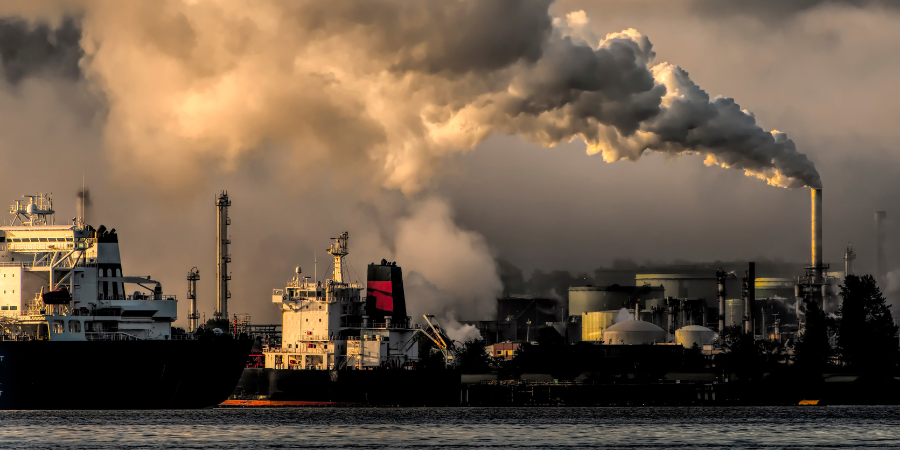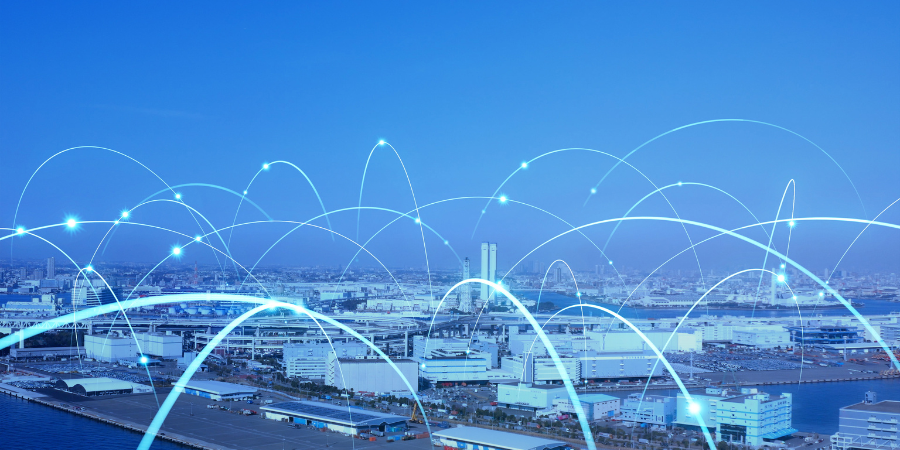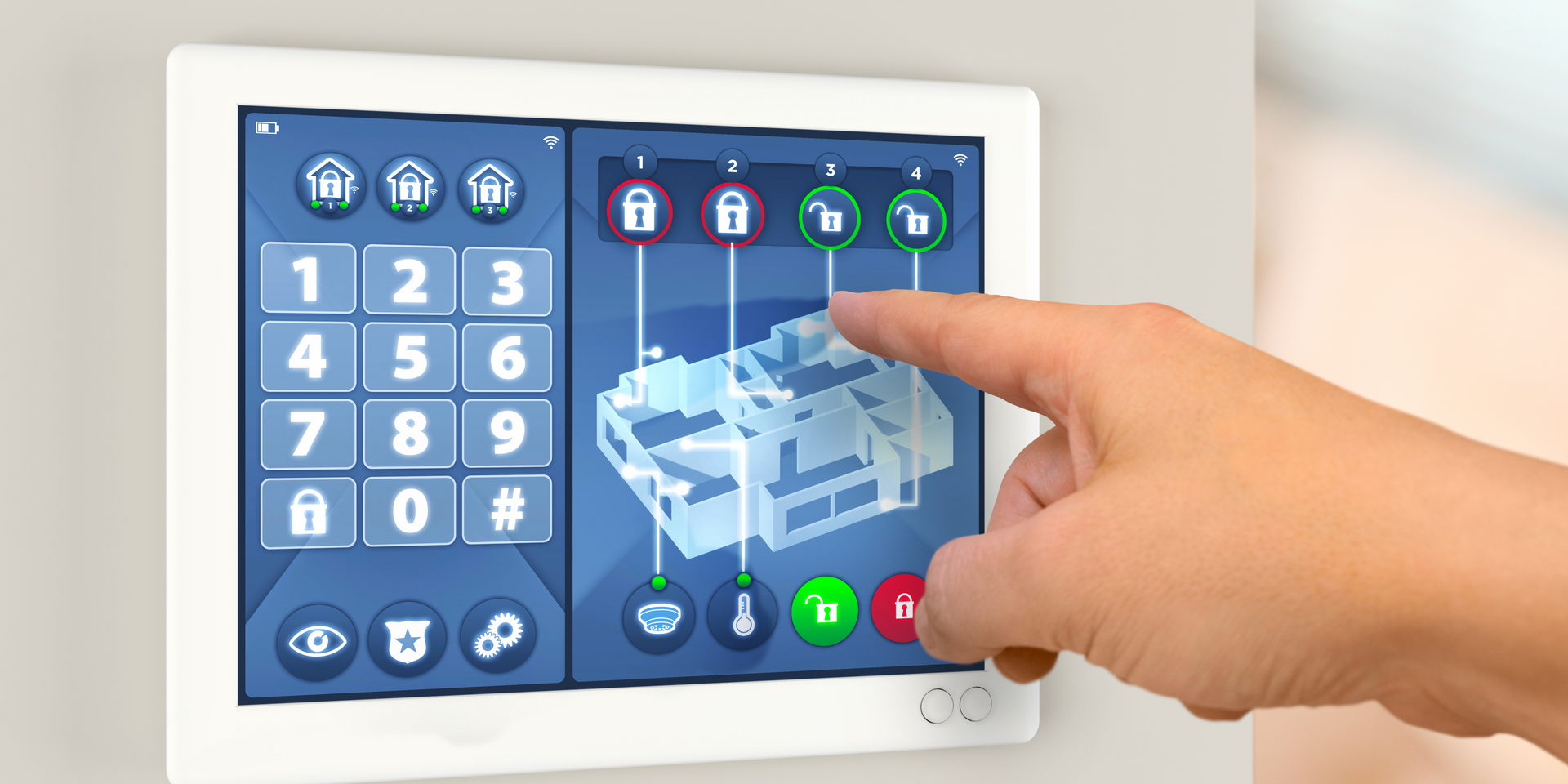Industry 5.0 Advantages and Disadvantages
What are the Advantages and Disadvantages of Industry
The adoption of Industry 4.0 Technologies brings numerous benefits to the economy, such as bolstering job creation and enhancing production efficiency, ultimately resulting in a broader range of affordable goods and services. Industries spearhead technological progress and innovation, catalyzing advancements across sectors like healthcare, transportation, and communication. Nevertheless, drawbacks include environmental degradation, the exhaustion of natural resources, and the risk of exacerbating inequality and displacing workers as automation and industrial consolidation take hold.
5 Advantages of Industrial Revolution
- Increased Production Efficiency: The Industrial Revolution introduced machinery and automation, which significantly boosted production rates. Factories could produce goods on a scale previously unimaginable, leading to greater availability and variety of products.
- Economic Growth: Industrialization spurred economic expansion, creating new industries and job opportunities. This growth contributed to the rise of a more prosperous middle class and an overall increase in the standard of living for many people.
- Technological Innovation: The Industrial Revolution was a hotbed of innovation, leading to the development of new technologies and machinery. These advancements not only improved industrial production but also had applications in various other sectors, driving progress across the board.
- Urbanization and Infrastructure Development: Industrialization led to urbanization, as people moved to cities in search of work, prompting the development of better infrastructure, including roads, bridges, and public transport systems, to support the growing urban populations.
- Globalization: The Industrial Revolution laid the groundwork for globalization, as it facilitated international trade. The production surplus drove the need for expanded markets, leading to increased trade relations between nations and the establishment of a more interconnected global economy.
Industry 5.0 Principles
Industry 5.0 emphasizes the collaboration between humans and smart systems, focusing on the integration of human ingenuity and creativity with the technical efficiency and precision of AI and robotics. It prioritizes sustainability and environmental responsibility, aiming to create industrial processes that are not only efficient but also environmentally friendly and resource-efficient. Another core principle of Industry 5.0 is personalization and customization, enabling industries to produce goods and services that are tailored to individual preferences and needs, enhancing customer satisfaction.
Industry 5.0 Advantages and Disadvantages
Industry 5.0 offers advantages such as enhanced human-machine interaction, increased customization, and the promotion of sustainable manufacturing practices, leading to improved job satisfaction and product quality. However, the transition to Industry 5.0 poses challenges, including the need for significant investment in new technologies and training, as well as potential resistance to change within organizations. Balancing technological advancement with ethical considerations and ensuring the equitable distribution of benefits is crucial to addressing the potential socio-economic disparities that Industry 5.0 might bring.

What were the Advantages and Disadvantages of Industrialization
Industrialization brought about significant advantages such as increased production efficiency, economic growth, and technological innovation, leading to improved living standards and the rise of urban centers. However, industrialization also resulted in environmental degradation, exploitation of labor, and widening economic inequalities, as rapid industrial expansion often came at the expense of workers' rights, public health, and natural resources. Balancing the benefits and drawbacks of industrialization remains a complex challenge, highlighting the importance of sustainable development and equitable distribution of wealth and opportunities.
Advantages and Disadvantages of Industrialization
The advantages of industrialization include mass production, job creation, and technological progress, driving economic development and societal advancement. Conversely, industrialization can lead to pollution, overconsumption of resources, and social inequalities, posing environmental and social challenges that require careful management and regulation. Achieving sustainable industrialization requires balancing economic growth with environmental preservation and addressing social issues to ensure inclusive and equitable development.
Industry 5.0 PDF
Industry 5.0 represents the fusion of human expertise and advanced technologies to drive innovation and sustainable manufacturing practices, emphasizing personalized production and collaborative human-machine interaction. A PDF on Industry 5.0 would likely explore its principles, advantages, and implementation strategies, providing insights into how this approach can revolutionize industries and contribute to economic growth and environmental sustainability. Examples of Industry 5.0 applications might include customized manufacturing processes, smart factories, and advanced robotics systems that prioritize human well-being and environmental conservation.
Industry 4.0 Examples
Examples of Industry 4.0 technologies include the Internet of Things (IoT), which connects machines and devices to enable data exchange and real-time monitoring in manufacturing processes. Other examples include artificial intelligence (AI) and machine learning algorithms used for predictive maintenance, quality control, and supply chain optimization in Industry 4.0. Smart factories equipped with cyber-physical systems exemplify the integration of Industry 4.0 technologies, enabling autonomous production processes and adaptive manufacturing systems.

Advantages and Disadvantages of the Industrial Revolution
The Industrial Revolution brought significant advancements such as mass production, technological innovation, and urbanization, leading to economic growth, improved living standards, and the rise of modern cities. However, it also resulted in environmental degradation, social inequality, and harsh working conditions, with negative impacts on public health, labor rights, and natural ecosystems. Balancing the benefits and drawbacks of the Industrial Revolution remains essential for sustainable development, emphasizing the need for responsible industrial practices and equitable distribution of wealth and opportunities.
10 Advantages of Industrial Revolution
- Mass Production: The Industrial Revolution introduced mechanized production methods, leading to mass production of goods at lower costs, making products more accessible to a broader population.
- Technological Innovation: Industrialization spurred rapid advancements in technology, such as the steam engine, textile machinery, and transportation systems, laying the foundation for modern infrastructure and industries.
- Economic Growth: Industrialization fueled economic expansion by creating new industries, generating employment opportunities, and stimulating trade and investment, contributing to overall economic development.
- Improved Living Standards: The increased availability of goods and services, along with rising wages and job opportunities, led to improved living standards for many people, fostering the growth of urban centers and the emergence of a middle class.
- Urbanization: Industrialization drove the migration of people from rural areas to cities in search of employment, leading to urbanization and the development of modern urban infrastructure and amenities.
- Expansion of Trade: The Industrial Revolution facilitated global trade by increasing the production capacity and efficiency of goods, leading to the expansion of markets and the exchange of goods across continents.
- Technological Advancements: Innovations in machinery, transportation, and communication technologies revolutionized various sectors, leading to increased productivity, efficiency, and connectivity.
- Medical Advancements: Industrialization spurred advancements in medical science and healthcare, leading to improved sanitation, disease control, and medical treatments, contributing to longer life expectancies and improved public health.
- Education Opportunities: The demand for skilled labor created by industrialization led to the establishment of educational institutions and the expansion of literacy rates, empowering individuals with knowledge and skills for employment in emerging industries.
- Social Progress: Industrialization brought about social reforms and movements, including labor rights movements and the abolition of slavery, leading to improved working conditions, increased rights for workers, and greater social equality and justice.
Industry 5.0 PPT
An Industry 5.0 PowerPoint presentation would likely explore the principles, advantages, and implementation strategies of this emerging industrial paradigm, focusing on human-machine collaboration, customization, and sustainability. The presentation may highlight examples of Industry 5.0 applications, such as personalized manufacturing, smart factories, and collaborative robotics systems, showcasing how this approach can revolutionize industries and drive economic growth. Key topics covered in the presentation might include the integration of creativity and craftsmanship with advanced technologies, the promotion of sustainable manufacturing practices, and the potential socio-economic impacts of Industry 5.0 on society.

What are the 5 Advantages of Industries
- Economic Growth: Industries drive economic development by creating jobs, generating revenue, and contributing to the overall GDP of a country. They attract investments, stimulate innovation, and foster entrepreneurship, leading to sustained economic growth.
- Infrastructure Development: Industries play a crucial role in infrastructure development by driving the construction of roads, bridges, ports, and utilities. They contribute to the expansion and modernization of urban areas, enhancing connectivity and accessibility.
- Technological Advancement: Industries drive technological innovation by investing in research and development, leading to the creation of new products, processes, and technologies. These advancements improve efficiency, productivity, and competitiveness across various sectors.
- Improved Living Standards: Industries produce goods and services that fulfill the needs and desires of consumers, leading to improved living standards. They provide essential goods like food, clothing, shelter, healthcare, and education, enhancing the quality of life for individuals and communities.
- Global Connectivity: Industries facilitate international trade and commerce by producing goods for export and importing raw materials and resources. They promote global connectivity, cultural exchange, and collaboration, fostering economic integration and mutual prosperity among nations.
Industry 5.0 Research Paper
An Industry 5.0 research paper would likely explore the principles, technologies, and potential benefits of this emerging industrial paradigm, emphasizing human-machine collaboration, customization, and sustainability. It may delve into case studies and empirical research to examine the implementation of Industry 5.0 concepts in various sectors, highlighting successful examples and challenges faced by organizations adopting this approach. The paper might also discuss the implications of Industry 5.0 on the future of work, education, and society, addressing concerns about automation, job displacement, and the need for reskilling and upskilling of the workforce.
Industry 5.0 Examples
Examples of Industry 5.0 applications include personalized manufacturing processes that leverage advanced technologies like AI, IoT, and robotics to tailor products to individual customer needs and preferences. Smart factories equipped with collaborative robots and cyber-physical systems exemplify Industry 5.0 principles, where humans and machines work together in harmony, optimizing production efficiency and flexibility. Industry 5.0 also encompasses sustainable manufacturing practices, such as eco-friendly production methods and circular economy initiatives, aiming to minimize environmental impact and promote responsible resource management.

What is Industry 5.0 McKinsey
McKinsey's exploration of Industry 5.0 likely delves into the integration of human-centric approaches with advanced technologies, emphasizing the synergy between human creativity and automation in manufacturing. McKinsey's analysis of Industry 5.0 may highlight the potential benefits of this paradigm shift, such as increased personalization, agility, and sustainability in industrial operations. By offering strategic insights and recommendations, McKinsey likely aims to assist organizations in navigating the transition to Industry 5.0, optimizing processes, and capitalizing on the opportunities presented by this transformative era in manufacturing.
Industry 5.0 McKinsey
McKinsey's exploration of Industry 5.0 likely delves into the integration of human-centric approaches with advanced technologies, emphasizing the synergy between human creativity and automation in manufacturing. McKinsey's analysis of Industry 5.0 may highlight the potential benefits of this paradigm shift, such as increased personalization, agility, and sustainability in industrial operations. By offering strategic insights and recommendations, McKinsey likely aims to assist organizations in navigating the transition to Industry 5.0, optimizing processes, and capitalizing on the opportunities presented by this transformative era in manufacturing.
5 Disadvantages of Industries
- Harm to Local Economies: In some cases, industrialization can harm local economies, especially in areas where traditional livelihoods such as agriculture or artisanal crafts are displaced by industrial activities, leading to economic instability and dependence on external industries.
- Negative Cultural Shifts: Industrialization can bring about negative cultural shifts as traditional cultural practices and values are replaced by consumerist attitudes and materialistic values, leading to the erosion of cultural diversity and identity.
- Loss of Arable Land: Industrial activities often lead to the conversion of arable land for industrial purposes, such as mining or manufacturing, reducing the availability of land for agriculture and food production, which can exacerbate food insecurity and hunger.
- Public Health Issues: Industrial pollution can have severe public health consequences, including respiratory diseases, neurological disorders, and cancer, as communities living near industrial sites are exposed to toxic chemicals and pollutants released into the environment.
- Erosion of Social Fabric:
Industrialization can erode the social fabric of communities as traditional social networks and support systems are disrupted by the influx of migrant workers, changes in employment patterns, and the breakdown of traditional family structures.

What are 5 Positives of the Industrial Revolution
- Technological Advancements: The Industrial Revolution introduced groundbreaking technologies such as the steam engine, mechanized looms, and the telegraph, paving the way for unprecedented innovation and progress across various sectors.
- Economic Growth: Industrialization spurred economic development by creating new industries, generating employment opportunities, and stimulating trade and investment, contributing to significant economic growth and prosperity.
- Improvement in Living Standards: The increased efficiency of production and the availability of goods led to improved living standards for many people, with access to a wider variety of affordable products and higher wages for industrial workers.
- Urbanization and Infrastructure Development: Industrialization led to urbanization as people migrated from rural areas to cities in search of employment opportunities, driving the development of modern urban infrastructure, including roads, bridges, and public utilities.
- Medical and Scientific Progress: The Industrial Revolution catalyzed advancements in medical science, sanitation, and public health, leading to improved hygiene practices, disease control measures, and medical treatments, contributing to longer life expectancies and better overall health outcomes.
10 Disadvantages of Industries
- Environmental Pollution: Industrial activities often result in pollution of air, water, and soil, leading to habitat destruction, biodiversity loss, and adverse effects on human health.
- Resource Depletion: Industries consume vast amounts of natural resources, including fossil fuels, minerals, and water, leading to resource depletion and contributing to environmental degradation.
- Social Inequality: Industrialization can exacerbate social inequalities by concentrating wealth and power in the hands of a few, leading to disparities in income, access to resources, and opportunities.
- Labor Exploitation: Some industries exploit workers, subjecting them to poor working conditions, low wages, long hours, and lack of job security, leading to worker exploitation and rights violations.
- Health Hazards: Industrial processes often expose workers to hazardous substances and unsafe working conditions, increasing the risk of occupational injuries, illnesses, and long-term health problems.
- Urbanization Challenges: Industrialization leads to rapid urbanization, resulting in overcrowding, inadequate housing, traffic congestion, and increased pressure on infrastructure and public services.
- Loss of Cultural Heritage: Industrialization can lead to the loss of cultural heritage and traditional ways of life as communities are displaced or assimilated into urban centers, leading to the erosion of cultural identities and practices.
- Displacement of Indigenous Communities: Industrial projects often encroach upon the lands of indigenous communities, leading to the displacement of these communities and the loss of their ancestral territories and livelihoods.
- Globalization: Industrialization contributes to globalization, leading to the homogenization of cultures, economies, and societies, and increasing dependence on global supply chains, which can undermine local autonomy and resilience.
- Climate Change: Industrial activities, particularly the burning of fossil fuels and deforestation, contribute to climate change, leading to rising temperatures, extreme weather events, sea-level rise, and other environmental impacts with far-reaching consequences for ecosystems and human societies.
You might also like



